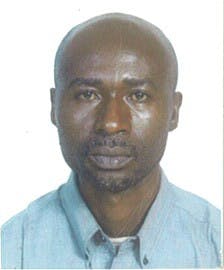Improve maternal health in Cameroon
Jan 21, 2015
Story
Target 6: Reduce by three quarters, between 1990 and 2015, the maternal mortality rate
Improving maternal health is an important part of the program of reproductive health, which is itself one of the pillars of the Health Sector. It is indeed like the message says to avoid losing life giving life.
Maternal mortality includes all deaths related to pregnancy, childbirth and its aftermath. The Government has set up the program "reproductive health" which places particular emphasis on the health of mothers, adolescents and the elderly. The health of the mother is still assigned to the national level by many complications related to pregnancy or close to limited access to reproductive health care and the low use of contraceptive methods.
To this day, many women still die in trying to give life. Between 1998 and 2004, the maternal mortality rate for the whole country has gone from 430 to 669 deaths per 100 000 live births. Similarly, in 2006, the survey reveals that MICS3 nearly 75% of maternal deaths occur during delivery and during the postpartum period.
The lack of skilled health personnel, the emergence of many diseases such as AIDS, and poverty status of populations may explain this situation. Indeed, my proportion of births attended by skilled health personnel is declining between 2004 and 2006. At national level, it has dropped almost 3 percentage points from 61.1% in 2004 to 58.9% in 2006. This still leaves the fact that pregnant women have continued to be assisted in 2006, by TBAs (10%) or with family / friends (21%). This phenomenon is observed in more regions of the north and east. The weight of tradition and isolation, the main reasons to explain this phenomenon.Source: National MDG progress / INS / 2008.
Localization
Located between the Equator and the Tropic of Cancer, Cameroon is like a big triangle registering between the Atlantic Ocean, Lake Chad and the Congo Basin. Neighboring countries are Nigeria, Chad, Central African Republic, Congo, Gabon and Equatorial Guinea. Area: 475,000 km ²
Socioeconomic status
With 19.4 million inhabitants, Cameroon has an extraordinary diversity: the north-west, a long chain of volcanoes extends to the rest of Mount Cameroon (4070 m), which overlooks the Atlantic coast, to the north, massive Adamawa, covered pastures, rises to 2500 m. The Cameroon brings together all types of landscapes hinge west and central Africa, all climates, all vegetation, most of the language families, the two major areas (Sudanese and Bantu) of traditional civilization The range of all beliefs (animist, Muslim and Christian) and retains the legacy of three ancient cities, the two main languages from colonization. This singular plurality earned him the title of real "Africa in Miniature", founded the potential wealth of the country, and gives it a unique geopolitical position among the states of the continent.
Nearly 80% of the population speaks French. 20% speak English. The main religions are: catholiscisme (35%), the Reformed religions (22%), Islam (20%) and traditional religions (23%). We can not talk about without mentioning the Cameroon football, sport king in the country who have distinguished themselves on continental and global plans with excellent results.
Political situation
It is only after a political crisis due to return to multiparmisme in the 1990s and a hard economic crisis, the country is gradually recovering and economic growth is back. Cameroon is thus presented as an island of peace and stability in Central Africa. Qualified for the HIPC initiative, following the successful completion of three-year program of economic reforms agreed with the Bretton Woods institutions, the country should receive a significant discount debt to be converted into social programs.




